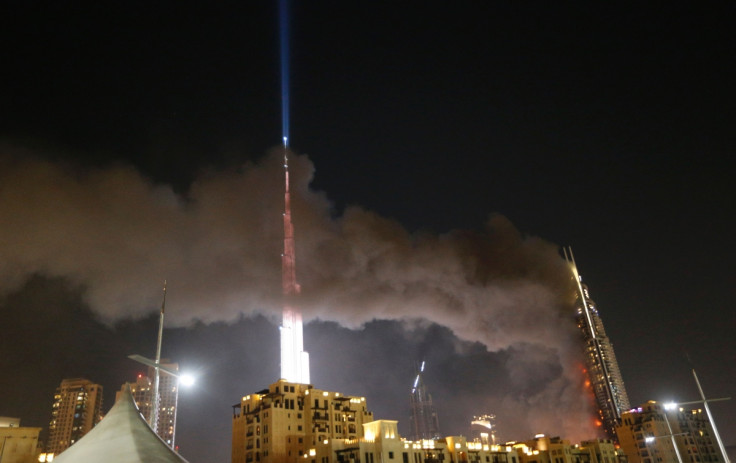Flammable cladding may have helped New Year's Eve fire spread through Dubai skyscraper

The fire that engulfed Dubai's Address Downtown hotel on New Year's Ever might have been fuelled by flammable cladding panels. The blaze in the 63-storey skyscraper is believed to have begun on a covered balcony a third of a way up the building, possibly after a pair of curtains caught fire. However, it is the speed at which the blaze spread which will be the main focus of investigation.
There were no fatalities, but at least 60 people now are believed to have been injured, with one of them suffering a heart attack. This was the third skyscraper fire in Dubai since 2012 and it has prompted new questioning about the safety of the city's high-rise buildings. Many of them are clad with flammable exterior panels.
The panels are made from with a core of thermoplastic – plastic that has been heated to a high temperature and then hardened – which is sandwiched between two sheets of aluminium. They panels are used for insulation and are long lasting and easy to maintain. Unfortunately they burn quickly and cause fires to spread rapidly, as aluminium is extremely flammable.
Following an earlier fire, the panels were banned in Dubai in 2013, when the United Arab Emirates altered its Fire and Life Safety Code to stipulated that fire-retardant cladding must be used on buildings taller than 15m. However the legislation does not apply to construction prior to 2013 and it has been claimed that up to 70% of Dubai's skyscrapers may be covered with the cladding, which has not been in use in the UK since the 1980s.
Phil Barry, a consultant at Gloucester-based CWB Fire Safety who has been employed extensively in Qatar and the UAE, said in an interview with the Daily Mail that it was "only a matter of time" before there were major fatalities caused by the cladding. Barry said: 'No one has died yet, but there will be fatalities sooner or later. The basic rule is that the outside of any building over 30 metres – which is as high as any fire-truck ladder can reach – must be made of non-combustible materials because you cannot fight the fire. Large numbers of buildings
"No one has died yet, but there will be fatalities sooner or later," said Barry. "The basic rule is that the outside of any building over 30 metres – which is as high as any fire-truck ladder can reach – must be made of non-combustible materials because you cannot fight the fire. Large numbers of buildings in the UAE do not meet that standard."
It is not yet known whether the hotel, completed in 2008, was clad with the panels, but experts said the way the blaze spread rapidly up one side of the building indicate that it was. Meanwhile, it has emerged that an individual stranded on the hotel's 48th floor during the blaze attempted to rappel down the building.
© Copyright IBTimes 2025. All rights reserved.





















